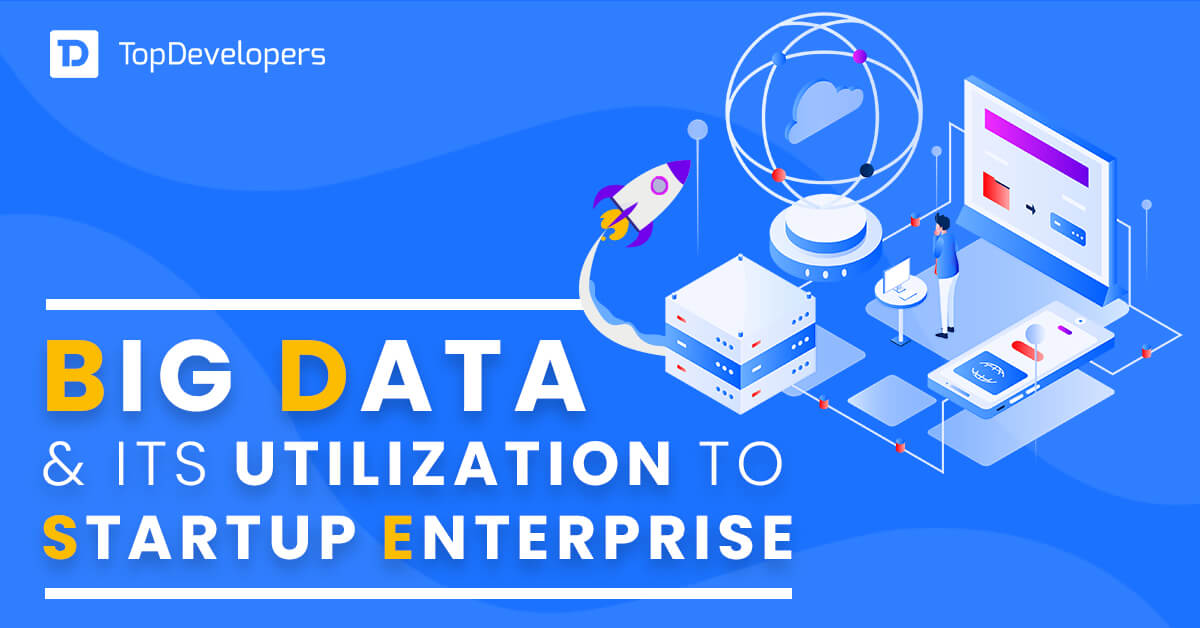
Startup enterprise owners think that they have got to manage bigger task; hence, risk management and data protection are kept at the bottom of the list of to do tasks. They overlook the fact that the most valuable business asset today is data; it only raises alarm when data is attacked and the company quivers due to a big loss in business.
With startup enterprises’ digital presence, they gather a substantial amount of information on their local drives and clouds. With tons of data gathered daily, security measurements should be a part of their quotidian existence. A short guide for startup enterprise data security can help young entrepreneurs keep their company’s digital health at an optimum level.
Table of Contents
Increased Security Breaches
According to RiskBased Security, there were nearly 3000 publicly reported security breaches that ravaged crucial data in Q1; in addition, two major breaches in Q3 witnessed more than 1 billion records each, and four breaches exposed more than 100 million records.
50% of organizations haven’t updated their security strategy in 3+ years
– CIO, Computerworld
The figures are staggering and they teach a valuable lesson to startup enterprises to consider data safety. The precautionary measures safeguard confidential and sensitive data from mal-practitioners. Data protection addresses both disaster recovery and operation data backup; the strategies include filtering and managing data access, creating a robust backup in emergencies.
The Consequences of a Data Breach
Data breaches pose significant threats to emerging businesses. Even a minor lapse in safeguarding data can result in substantial financial losses and damage a company’s reputation. These adverse impacts may persist well beyond the resolution of the breach. In this context, we explore the possible aftermath of a data breach for startup enterprises and strategies to shield against such risks.
The Financial Consequences of a Data Breach
When contemplating the ramifications of a data breach, the foremost concern is its financial toll. For a startup, a solitary data breach can result in multimillion-dollar losses, alongside the expenses tied to rectifying the harm caused, which may encompass the implementation of enhanced security protocols or providing customer assistance.
This financial burden can escalate should a data breach culminate in legal proceedings against the firm or if customers seek restitution for data loss or damages incurred due to the breach.
Reputational Damage
Another significant data breach fallout is the harm inflicted on a startup’s reputation. The trust and goodwill that startups rely on to draw in customers and secure investments can be severely compromised at the mere suggestion of a security issue. Beyond the monetary setbacks resulting from damage to the company’s reputation, there looms the peril of potential customers opting out of future dealings due to apprehensions about the startup’s security protocols.
Increased Regulatory Scrutiny
Furthermore, data breaches can invite heightened regulatory scrutiny. In cases where a data breach reaches a critical threshold, regulatory authorities might initiate investigations and levy fines or sanctions against the accountable company. Moreover, this level of scrutiny can cast a shadow over future fundraising endeavors, with potential investors exercising caution when considering involvement with a company with a history of data breaches.
Data Security – a primary requirement for Startup Enterprises
Every step young entrepreneurs take toward startup establishment is gauged through various yardsticks. In other words, data safeguarding requires a multi-dimensional approach to secure a company’s information by all accounts. The importance of data security is reflected through its benefits –
Customer’s privacy leading to trust
Gathering data helps new companies do better in engaging and interacting with their clients. Using data analytics a customer can be served with customized offers and services. Nevertheless, a data breach can hamper customers’ trust in the company; thus, safeguarding it through data security solutions will build long-lasting customer trust.
Brand building
Most startup companies are interconnected today through bot algorithms that exchange crucial data-abiding data-sharing regulations. Safeguarding data will assure them that the data shared is secure, genuine, and reliable to build better business strategies that will create brand value and a strong customer base.
Safe work practices
Employees and stakeholders working in a safer environment boost their morale. The safe work practice comes through stringent data privacy protection allowing key project personnel to handle their tasks more confidently and with responsibility.
Easy flow of management
With fair practices and data security in place, the business cycle runs smoothly. Compliant businesses are the ones that have effective management and organized storage of information. Such an easy flow in management help the organization meets their vision and mission.
Big score on compliance
A well-organized company with data safeguarding measurements and client retention can attain its vision and mission. Various compliances can be achieved that can earn the organization certificates of standard industry practices.
<h2″>Standard Data Security Technologies that you should know
There are numerous data security tools and techniques practiced by unicorns and established enterprises. Startups too can embrace these practices to improve their data security standards to gain the benefits mentioned earlier. However, it is worth noting that there is no single method to secure data; instead, the organization would have to blend more than one technology to assure full-scale data safety measures.
Identification
The modern IT infrastructure stores data at various places – servers, endpoints, and clouds. A clear conscience of data flow is the primary requirement to learn the data risks such as misuse and stealing. Startup enterprises need to identify the data type, its location, and most importantly its usage. Hence, data security tools meant for data discovery and categorization can offer exclusive data security management.
Masking
Masking data is the safest way to play with information without harming it. In other words, data masking helps you build a ‘copy’ version of your startup’s rich information to use for various tests, training, and other quality assurance. Here, you don’t hamper the ‘real’ data and still perform functions on their alternates.
Identity Access Management (IAM)
To manage digital identity, startup enterprises may look for adapting identity and access management involving business processes, strategies, and technical frameworks. Single, two-factor and multi-factor authentications provide privileged navigation to the tools of IAM.
Encryption
To save data from being read, it is converted from plain-text to cipher-text. The data can be processed only when encrypted data is decrypted with a special key. It is one of the trusted ways to secure sensitive information and prevent data security breaches.
Prevention of data loss
Backing up data to other locations is a common way to achieve data loss prevention. The data security software specially designed for this process smartly analyzes the information to identify crucial data and enable centrally controlled enforcement to imply data protection protocols and data security policies.
Audit
Regular audits for data security are performed in startup enterprises to assure data safety. Any data security breach or loophole found is immediately addressed and repaired to prevent further loss which could be bigger and potentially destructive.
Customized tools
Anti-malware, antivirus, and other endpoint protections are other common ways to protect data, likely to continue in 2024. Workstations, mobile devices, other handheld devices, servers, and cloud systems can be foolproofed with such anti tools.
Steps to Securing Your Startup’s Data
Data security is an indispensable facet of contemporary businesses, although it frequently escapes the attention of startups. As the volume of digital data continues its relentless ascent, startup enterprises confront the formidable challenge of shielding their data from malevolent adversaries.
To safeguard your startup’s data integrity and uphold the confidence of customers and stakeholders, it becomes imperative to undertake a series of measures to ensure robust data security.
1. Assess Your Data Security Needs
The initial stride toward fortifying your startup’s data entails evaluating your existing security requisites. Create an inventory encompassing all systems and applications housing sensitive data, and contemplate the requisite security measures for their protection. Deliberate upon the individuals with access to this data and scrutinize its utilization. Undertaking this comprehensive assessment will give you insights into the necessary security measures and highlight areas warranting heightened focus.
2. Develop A Security Plan
Upon acquiring a comprehensive grasp of your data security prerequisites, the next step involves devising a comprehensive strategy for shielding your data. Contemplate the indispensable security measures requisite for each system or application, including but not limited to encryption, user authentication protocols, firewalls, and intrusion detection systems. Ensure that your plan takes into account both physical and digital security imperatives.
3. Train Your Employees on Data Security
Your workforce constitutes a pivotal element within your data security framework. It is imperative to enlighten your employees regarding optimal data security practices, including using robust passwords, refraining from sharing account credentials, and appropriately disposing of devices housing sensitive data. Assure all staff members have access to the requisite training courses, facilitating their continuous awareness of the latest security advancements and technologies.
4. Monitor Your Systems Regularly
Consistently monitoring your systems is pivotal in swiftly detecting potential threats and implementing requisite measures before any breach. Establish protocols for scrutinizing logs, conducting system audits, and performing vulnerability scans, facilitating prompt resolution of any identified issues. This proactive approach also allows for evaluating alterations made to systems or applications, allowing for the swift identification and rectification of unauthorized modifications.
5. Have A Response Plan in Place
Irrespective of the robustness of your system’s security, the possibility of data breaches always lingers. To guarantee preparedness in the event of an intrusion, create a comprehensive response strategy delineating the course of action for addressing a breach and communicating with stakeholders about the occurrence. All employees must be well-versed in their respective roles during emergencies, ensuring swift and efficient response should a breach of data transpire.
Continuous Monitoring and Vulnerability Management
Perpetual surveillance and proficient vulnerability control are pivotal elements within an effective data security blueprint. Continuous monitoring signifies an unceasing regimen encompassing security risk surveillance, while vulnerability management entails recognizing, evaluating, and alleviating established vulnerabilities. These practices equip organizations with the discernment essential for detecting and countering data security menaces.
Employee Education and Awareness
Regarding data security, fostering employee education and awareness constitutes a crucial domain for startups. Implementing an apt training and awareness initiative can guarantee that your enterprise possesses the requisite policies and procedures to safeguard company data effectively.
How to assure Data security for your Startup enterprise?
No single solution guarantees complete data security. Nevertheless, there could be a blend of technologies to prevent data breach to assure secure information management for startup enterprises.
Quarantine
Quarantining sensitive files is a promising way to secure data management. Placing the crucial data folders on a shared or common hard disk accessible to the entire workforce is a mistake that results in terrible consequences of a data breach. Keeping sensitive information in a quarantined place makes it safe.
Prevention
Preparing for cyber attacks should be a preventive measure, not reactive. Policies that encompass the present, unforeseen and future cyber threats to data should be taken into account. The threats could be both internal and external and hence, real-time monitoring and alert system need to be placed.
Deletion
Removing unused data has been quite an old practice and will continue to be one of the major factors in data safety trends in 2024 as well. Storing something that is least used becomes a liability and threat; hence, getting rid of such information is a wise step in increasing data security.
Data Backup
Among the most potent data-safeguarding tactics is the establishment of backups. In the past, data duplication was a manual, intermittent process, typically executed via tape drives or libraries and retrieved when errors emerged. Nonetheless, this procedure has evolved into a more dynamic function.
Certain technologies can conduct a comprehensive process that includes backing up, archiving, and indexing data in a single operation. This contemporary approach conserves time and optimizes long-term data storage efficiently.
Disaster Recovery
Historically, disaster recovery primarily revolved around data retrieval in crises. However, contemporary approaches have fused it with complementary strategies. Presently, it operates in tandem with backup data through snapshots and replication. In a server failure, these mechanisms expedite data recovery by transmitting the backup data to the primary storage. Once all elements are in order and data duplication and merging have occurred, operations resume their regular course seamlessly.
Over to you
In conclusion, enterprise-level data security is achievable and also essential for startups. By following the best practices and using the right tools, startups can protect their data from breaches, leaks and thefts. Data security is not a luxury, but a necessity for any business that wants to succeed in the digital age.
 Gillian Harper
| Sep 19, 2023
Gillian Harper
| Sep 19, 2023
A professionally engaged blogger, an entertainer, dancer, tech critic, movie buff and a quick learner with an impressive personality! I work as a Senior Process Specialist at Topdevelopers.co as I can readily solve business problems by analyzing the overall process. I’m also good at building a better rapport with people!


